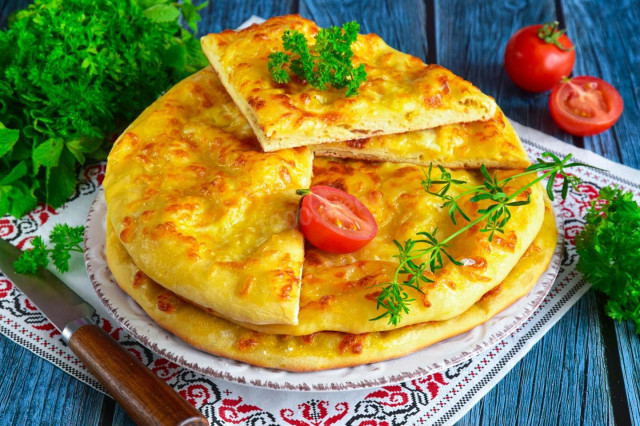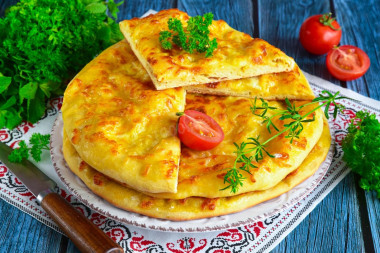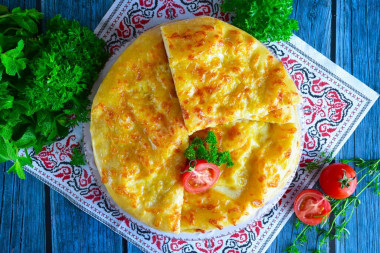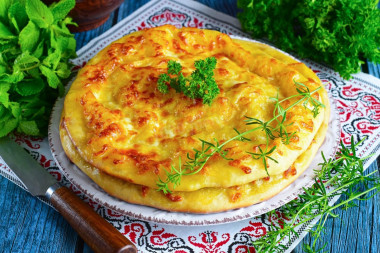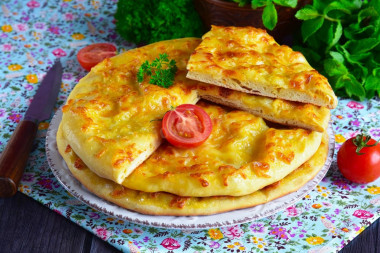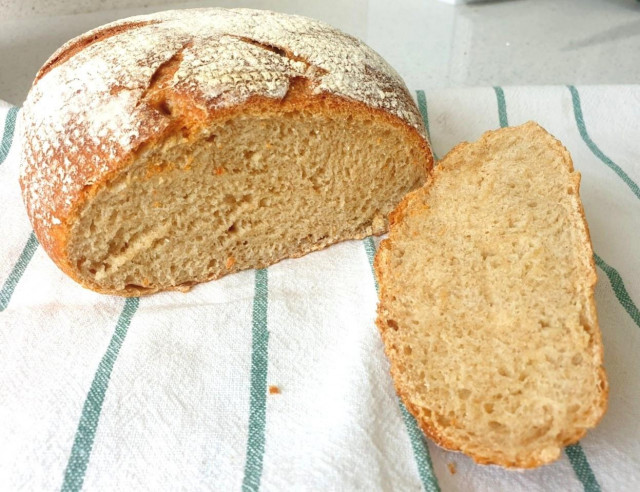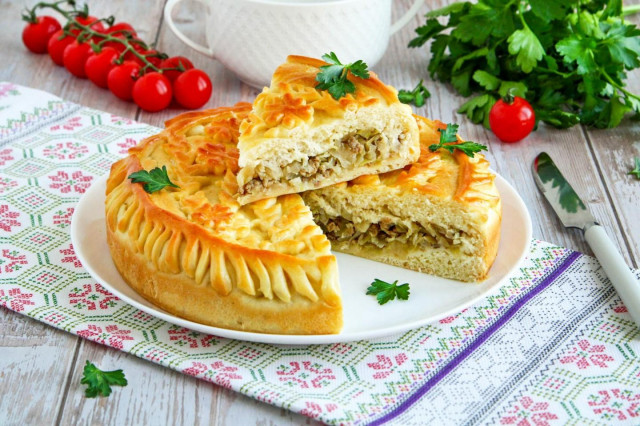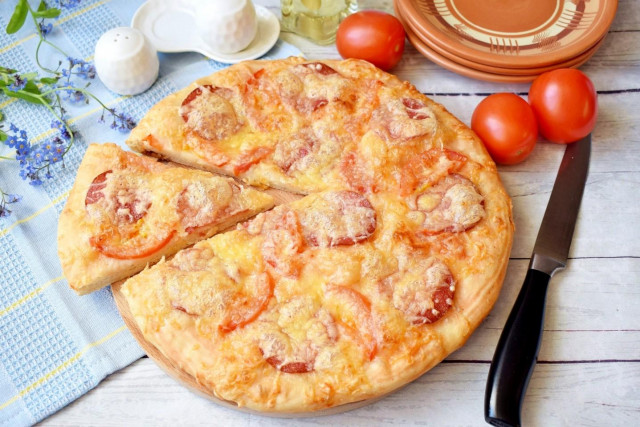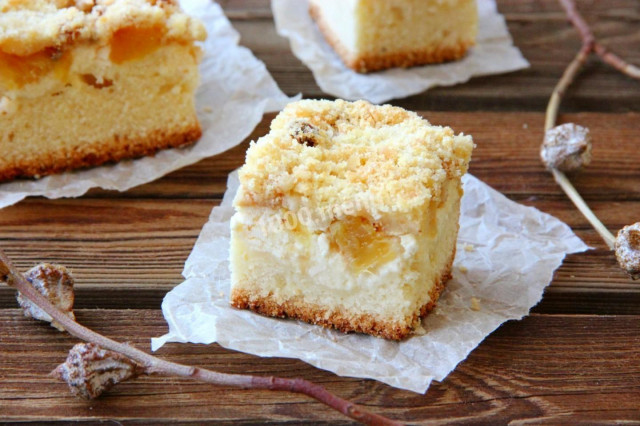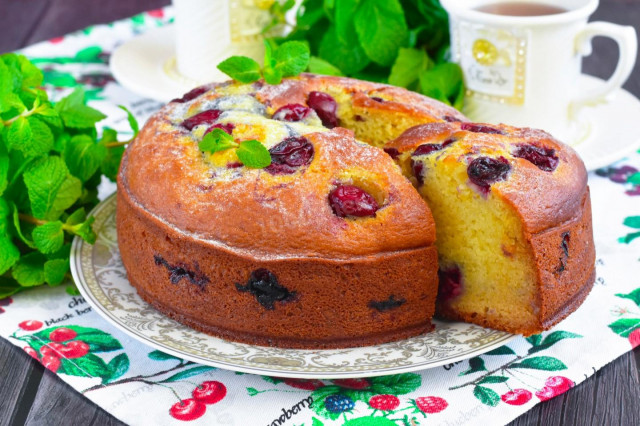Composition / ingredients
Step-by-step cooking
Step 1:
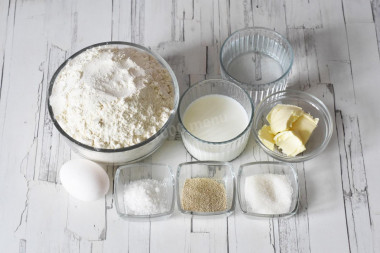
How to make khachapuri with milk and cheese? To begin, prepare all the necessary ingredients according to the list and start cooking with the dough. Take flour only of the highest grade. Dry yeast can be replaced with fresh pressed yeast, they need 2 times more, that is, about 12-15 g.
Step 2:
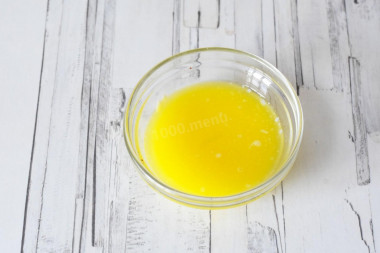
Pre-melt and cool the butter.
Step 3:
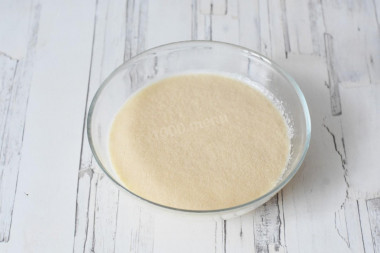
In warm water heated to 37-40 ° C, dissolve the sugar. Sprinkle dry yeast over the surface and leave until a fluffy cap appears (10-20 minutes). This means that the yeast is working and can be cooked further. If the caps do not appear, then the yeast is of poor quality and the dough will not rise with them.
Step 4:
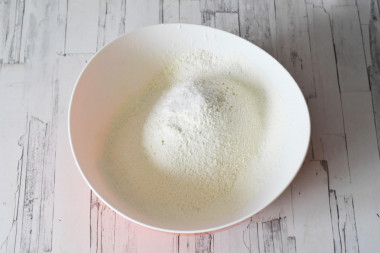
Sift flour into a large bowl. Add salt and stir.
Step 5:
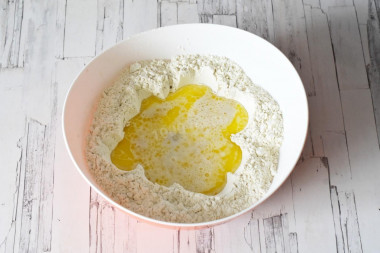
Make a recess in the flour. Add the egg, warm milk and melted butter to it. Pour in the activated yeast.
Step 6:
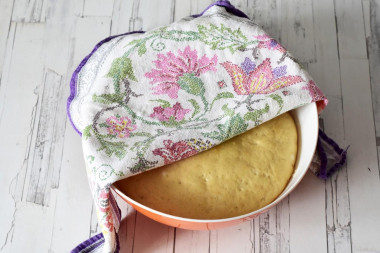
Knead a soft elastic homogeneous dough. Roll the dough into a ball, brush with vegetable oil and put it in a bowl. Cover with a towel and leave in the heat to rise for 1.5-2 hours.
Step 7:
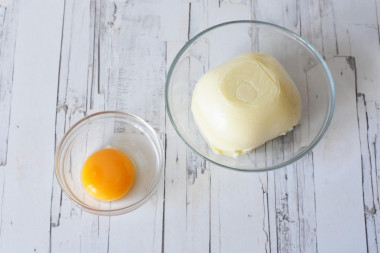
While the dough is rising, prepare the necessary ingredients for filling and greasing. Instead of suluguni, you can use Imeretian cheese.
Step 8:

Grate Suluguni on a coarse grater.
Step 9:
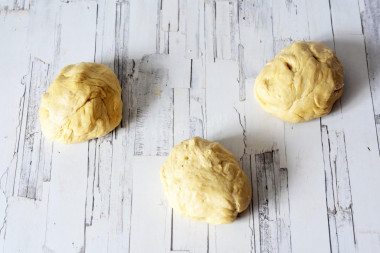
Knead the dough that has come up and divide it into 3 equal parts.
Step 10:
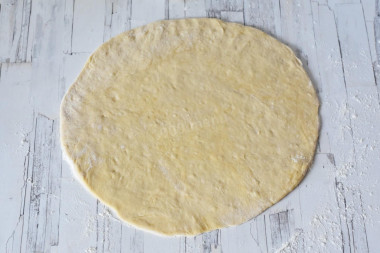
Roll out each piece of dough on a floured table into a circle with a diameter of 25-28 cm.
Step 11:
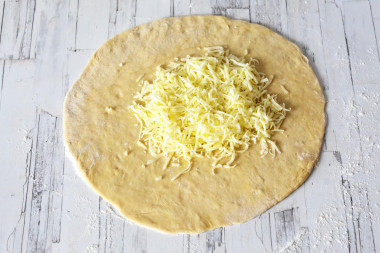
Put about 150 g of grated cheese in the middle.
Step 12:
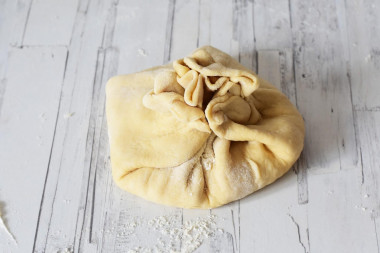
Lift the edges of the dough and assemble in the center.
Step 13:
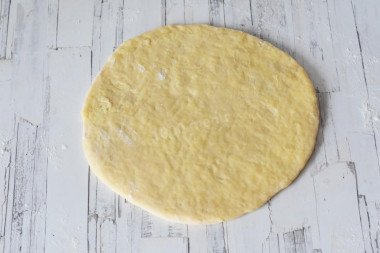
Turn the dough seam down and roll out again into a circle of the same diameter.
Step 14:
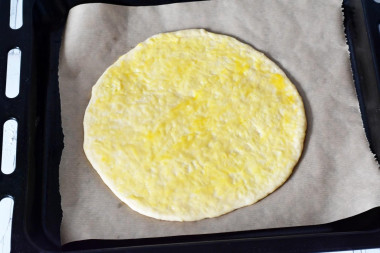
Transfer the khachapuri to a baking sheet lined with parchment and brush with yolk.
Step 15:
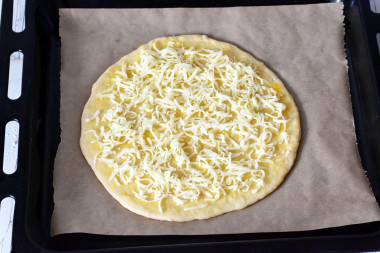
Sprinkle the remaining grated cheese on top. Bake in a preheated 200 ° C oven for 10-15 minutes until golden brown. Enjoy your meal!
Be prepared for the fact that you may need more or less flour than indicated in the recipe. Focus not on the amount of flour, but on the desired consistency of the dough. To avoid mistakes, read about flour and its properties!
Important: how to properly replace dry yeast with pressed yeast, in which liquid it is better to breed, why you need to be able to distinguish active yeast from instant and other useful tips read in the article about yeast .
Keep in mind that everyone's ovens are different. The temperature and cooking time may differ from those specified in the recipe. To make any baked dish successful, use useful information about the features of ovens !
Caloric content of the products possible in the composition of the dish
- Whole cow's milk - 68 kcal/100g
- Milk 3.5% fat content - 64 kcal/100g
- Milk 3.2% fat content - 60 kcal/100g
- Milk 1.5% fat content - 47 kcal/100g
- Concentrated milk 7.5% fat content - 140 kcal/100g
- Milk 2.5% fat content - 54 kcal/100g
- Chicken egg - 157 kcal/100g
- Egg white - 45 kcal/100g
- Egg powder - 542 kcal/100g
- Egg yolk - 352 kcal/100g
- Ostrich egg - 118 kcal/100g
- Whole durum wheat flour fortified - 333 kcal/100g
- Whole durum wheat flour, universal - 364 kcal/100g
- Flour krupchatka - 348 kcal/100g
- Flour - 325 kcal/100g
- Granulated sugar - 398 kcal/100g
- Sugar - 398 kcal/100g
- Suluguni - 290 kcal/100g
- Butter 82% - 734 kcal/100g
- Amateur unsalted butter - 709 kcal/100g
- Unsalted peasant butter - 661 kcal/100g
- Peasant salted butter - 652 kcal/100g
- Melted butter - 869 kcal/100g
- Salt - 0 kcal/100g
- Water - 0 kcal/100g
- Egg yolks - 352 kcal/100g
- Dry yeast - 410 kcal/100g

